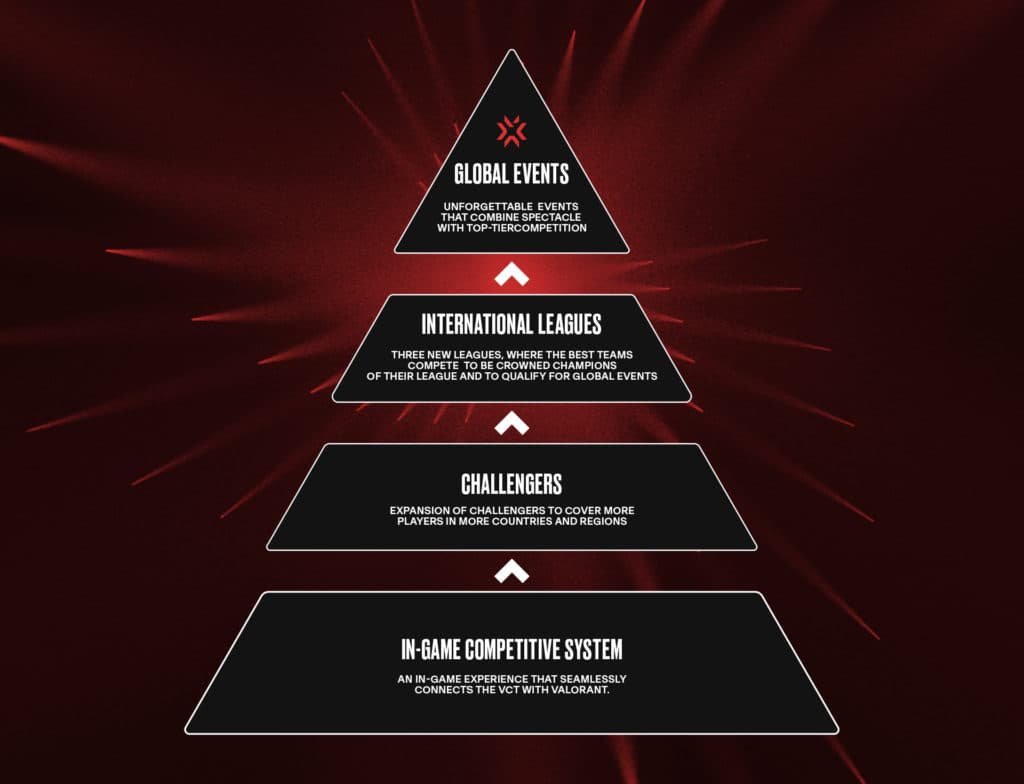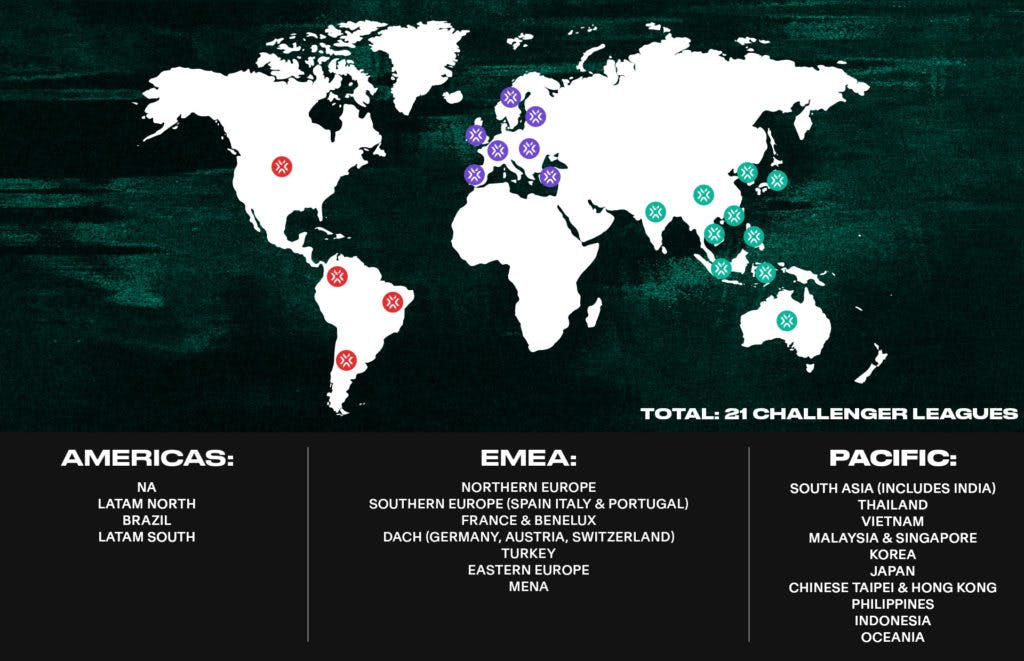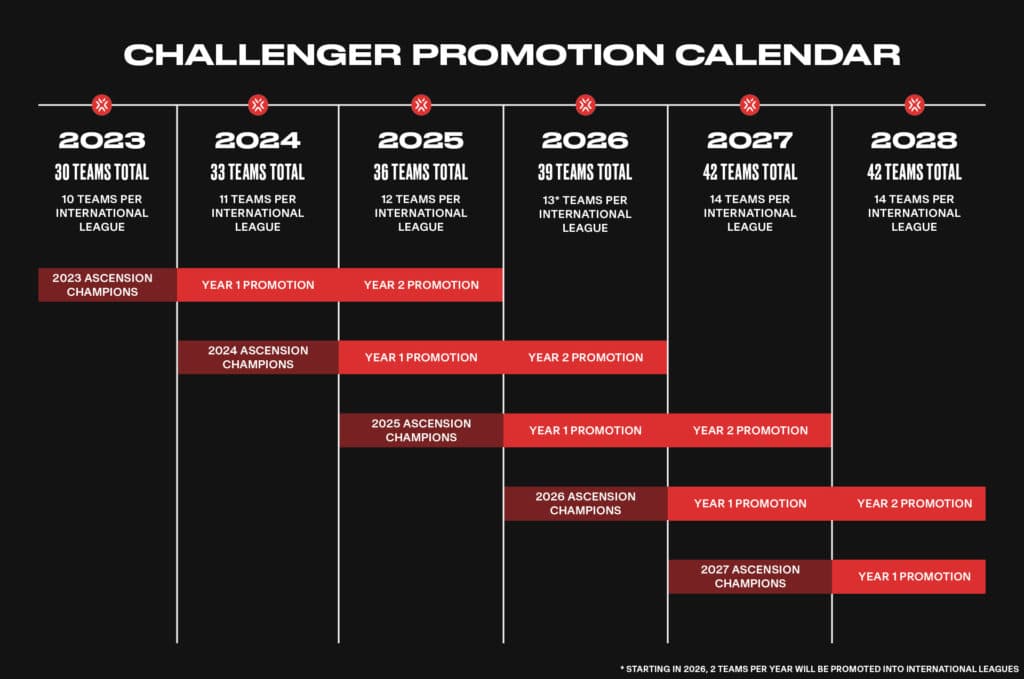Riot is committing to the tier-two scene with the introduction of 21 regional circuits and a new event series labeled Ascension
The VALORANT Champions Tour landscape is set to drastically change in 2023 through the introduction of a partnered system, and fans and players alike turned have their attention to the tier-two scene. With a plan that effectively flips the current model from an open competition to a closed one, many wondered what that meant for the talented players sitting on the fringes of the franchise system.
Fortunately, Riot has seemingly listened to the concerns of fans and a newly-formed players association, reported on by George Geddes of Dot Esports. In a statement, Riot has decided to expand their Challengers plans to facilitate growth among players outside the franchise model.
"Next year, we will be expanding Challengers to cover more players in more regions. Additionally, teams that start in Challengers will have a pathway into the international leagues, and eventually even global events. This system will surface the up-and-coming stars through a fully connected ecosystem with larger events, new tournaments, and high stakes," said head of esports operations, Whalen Rozelle.
While franchising is the next step for the VCT, it oftentimes makes the journey for prospective players more difficult. Whalen Rozelle pointed to push players to set aspirational, long-term goal. He pointed to giving players a reason to keep grinding, even at the tier-two level. The pyramid also points to setting an accessible path to achieving international stardom.
“A strong Challenger ecosystem is a key part of VALORANT esports’ longterm success and we believe connecting every level of the pyramid is the best way to give aspiring stars the chance to shine and teams to participate in meaningful high-stakes competitions"

Promotion from Challengers Into International Leagues
With that in mind, Riot has introduced a rework to the Challengers system heading into franchising. 21 domestic leagues will be established around the globe, including North America, the many regions of Europe, APAC, and South and Central America.
Furthermore, teams that make it into Challengers will have to qualify through an open bracket system. Similar to the 2022 VCT, teams will compete across two splits of multi-week regular season play. The top two teams of those region will advance into a newly formed event series labeled Ascension. From there, the winners of the Ascension tournaments out of the three regions (NA, EMEA, and APAC) will earn a two-year promotion into the International Leagues starting in 2024.

Moving forward, Riot will incorporate one team into the International Leagues until reaching a cap of 14 teams in 2027. The leagues will continually contract and expand. With previously qualified teams falling back into their domestic leagues after the two-year period ends. As for the teams that do qualify for International play, they will have the ability to compete for a Masters trophy among the partnered franchises.
"Promoted teams will have the opportunity to prove themselves against the international league teams during the VCT season, receive similar league benefits, and an equal chance to qualify into Masters and Champions. After two years, teams will return to their league to battle their way back through Challengers and Ascension tournaments."
Overwhelming Demand
The franchise system allegedly promises a bigger and brighter future for VALORANT. The ability to promote teams and franchises could mold stronger fan bases. All while potentially bringing together the highest level of competition imaginable and making the average VCT broadcast more enticing for fans.

However, there is a downside to limiting the number of teams able to compete on a global scale. It weakens the overall ecosystem and makes the goal of playing professionally less obtainable. The 30 partnered teams number that has been floating around would essentially halve the scene entirely.
Regardless, Riot is making strides to help integrate talented players into the scene. The Ascension series will be broadcasted alongside the International leagues, giving players the exposure necessary to ascend the VALORANT ladder. Even with organizations departing the scene after missing out on franchising, there's still an "overwhelming demand," for a tier-two scene.
“Throughout the past few months, the overwhelming demand from teams to compete in the VALORANT esports ecosystem led us to expand our plans for VCT Challengers,” said Whalen Rozelle.
Nevertheless, the main concern among fans and players is sustainability. With other esports titles' tier-two scenes essentially dying out due to developers paying little attention. The VALORANT community at large realizes the importance of keeping players interested in improving. And, a well-functioning two-tier scene is the only achievable way to do this. It re-opens the door for teams who were interested in competing in the game but didn't make the cut during franchising.